 |
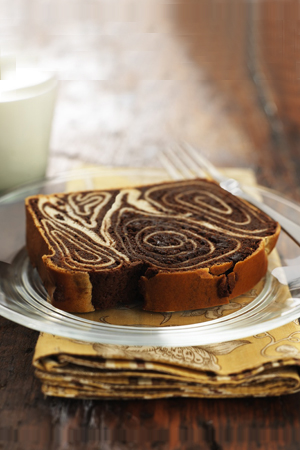 |
Chocolate povitica, one of our top three flavors. The design is almost identical for the Poppy Seed povitica, which we voted to the top of the podium. All photography courtesy Strawberry Hill. |
| WHAT IT IS: Babka-like yeast cake in 11 delicious flavors. |
| WHY IT’S DIFFERENT: It’s more buttery and dense than a babka. Whereas babka has a lighter yeast dough, Strawberry Hill’s povitica is dense and rich. Each loaf weighs 2.5 pounds! |
WHY WE LOVE IT: This povitica is so versatile, from a danish or muffin replacement at breakfast to dessert, plain or à la mode. |
| WHERE TO BUY IT: Povitica.com. A single loaf is $26.99, a double box is $44.99, four one-pound loaves are $49.95 (recommended for a delicious variety). Great gifts; the handsome, reusable boxes require no extra wrapping. |
|
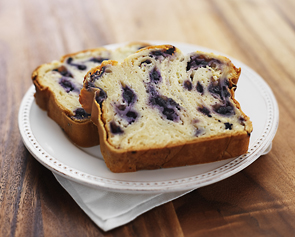
Blueberry Cream Cheese Povitica, one of our top three favorites.
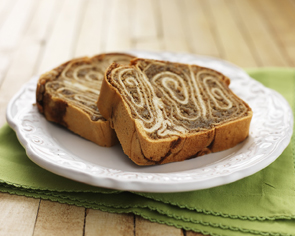
The classic flavors are swirled into a beautiful patterns. Above, English Walnut, the “original” recipe.
|
|
Strawberry Hill Povitica: Unusual Name, Great Taste
Jump to the article index below
REVIEW: Recently, we came across a bakery that specializes in povitica (poe-VEET-see-yah), a traditional Eastern European cake popular in Croatia, Hungary, Serbia, Poland, Slovenia and Slovakia.
We hadn’t heard that name before, but discovered that povitica (also called potica [poh-TEET-sah], depending on the country) is a variation of Russian-origin babka, a delightful yeast cake with which we are quite familiar.
But Strawberry Hill povitica is more buttery than most babka we’ve come across; and the cream cheese variations are to die for. All 12 flavors are delicious, and we’re in love with three of them. (More about the flavors below.)
The name means “swirled bread,” derived from the Slovenian poviti, “to wrap in.” The dense loaves of yeast cake are packed with choices of nuts, fruits, chocolate and poppy seeds, each better than the next (our personal favorites are below).
We discovered Strawberry Hill Povitica Company just in time to recommend the cakes as special gifts for Mother’s Day and Father’s Day. Kosher family members and friends also benefit: The line is certified kosher by Vaad of Kansas City.
The cake (or bread, as it is often called), is part Danish, part loaf cake. It can be breakfast cake, dessert or snack. While povitica fillings can also be savory, Strawberry Hill specializes in sweet flavors—a total of 11.
Povitica Flavors
- Classics: Apple Cinnamon, English Walnut, Poppy Seed, Raisin Walnut, Reduced Sugar Walnut†
- Chocolate: Chocolate Chip Cream Cheese, Cokolada (Chocolate)
- Cream Cheese: Cream Cheese, Blueberry Cream Cheese (seasonal), Strawberry Cream Cheese
- Fruits: Cranberry Walnut, Pumpkin Spice Cream Cheese (seasonal)
Flavors are a personal choice. We tried every one, and each has its personality. But the three that slayed us are:
- Blueberry Cream Cheese: Large, sweet blueberries in rich cream cheese dough have a fresh fruit flavor that triumphed over the Strawberry Cream Cheese, which is more strawberry jam-like in flavor.
- Cokolada (Chocolate): A depth of excellent chocolate favor that satisfies a demanding chocolate cake lover.
- Poppy Seed: A middle European/Eastern European ingredient that isn’t popular in the U.S. But miss it at your own risk: It was the number one favorite of everyone at THE NIBBLE.
The article continues below, with how povitica is made.
†The sugar is reduced too much in this flavor, such that it comes across more like walnut bread or raisin bread rather than cake. It has 10g sugar (and no raisins), compared to 14g for the regular English Walnut. So unless you don’t like sweetness, stick with the regular flavors (which have up to 18g sugar, depending on the flavor).
|
| |
|
|
Bake A Cake!
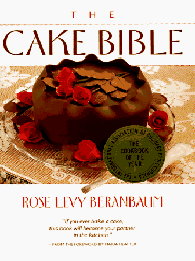 |
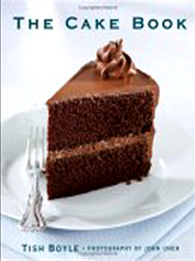 |
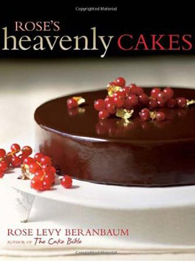 |
The Cake Bible, by Rose Levy Beranbaum. The must-have book for everyone who bakes, or aspires to it. More information.
|
The Cake Book, by Tish Boyle. The secrets to baking great cakes, with nearly 200 irresistible recipes. More information.
|
Rose’s Heavenly Cakes, by Rose Levy Beranbaum. Another volume of great recipes from the Diva of Desserts. More information.
|
INDEX OF REVIEW
This is Page 1 of a one-page review. Click on the black links to visit other articles:
|
MORE TO DISCOVER
|
How Povitica Is Made
A sweetened yeast dough is rolled very thin and filled by hand, brushed with a milk wash, and baked. The loaves are very heavy—2-1/2 pounds, which includes some 2 pounds of filling.
The cakes are baked to order and packaged in an attractive, reusable gift box. At $32.98 for one loaf (shipping included), it may seem pricey for everyday enjoyment; but the high-quality ingredients merit the expense (even the chocolate was especially good). It’s money well spent for a delicious treat or gift.
Instructions for cutting, serving and storing are included. The company recommends refrigerating for easier slicing and up to two weeks of freshness (otherwise, stick it in the freezer).
|
|
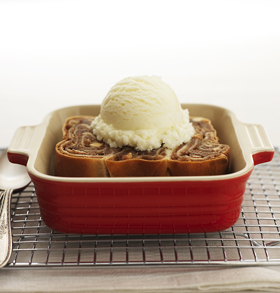 From breakfast pastry to dessert, povitica is an all-purpose cake. From breakfast pastry to dessert, povitica is an all-purpose cake.
|
Refrigeration worked fine for us; we microwaved the slices for 15-20 seconds for a fresh-from-the-oven experience. At room temperature, slice the cake upside-down with a serrated knife.
We looked forward to a slice with our morning tea or coffee, and as a dessert à la mode. It’s a great snack cake too, a contrast of yeasty lightness and dense filling.
— Karen Hochman
CAKE TRIVIA: The original breads were round, not the more familiar loaf shapes that came later. In the early days of baking there were no pans, so the dough was patted into a round shape and placed upon the hearthstone to bake. Cakes are round because they descended from these ancient round loaves. Early breads and cakes were both leavened with wild yeast, which enabled the dough to rise.
It took another few millennia, until the 18th century, to discover the technique of whipping eggs to make cakes rise. While it required many hours of beating, it heralded the dawn of modern baking. By the 1840s, baking soda had been invented, followed by baking powder in the 1860s. As ovens with regulated temperatures became available, and sugar became affordable to everyone, more people were able to bake, resulting in more creativity in recipe development; the modern cake as we know it began to take shape in the mid-19th century.
Even though sugar originated in Asia, cakes as we now know them—flour, eggs, butter and sugar baked to a sweet, fluffy deliciousness—are a Western evolution. There are thousands of different types of cakes in the world today; each culture has its specialties, most of which never reach our shores.
Do you have friends who would enjoy THE NIBBLE?
Click here to send them an invitation to sign up for their own copy. |
© Copyright 2004-2025 Lifestyle Direct, Inc. All rights
reserved. All information contained herein is subject to change at any time
without notice. All details must be directly confirmed with manufacturers, service
establishments and other third parties. The material in this e-zine may not
be reproduced, distributed, transmitted, cached, or otherwise used, except with
the prior written permission of Lifestyle Direct, Inc.
|
|

|
 |